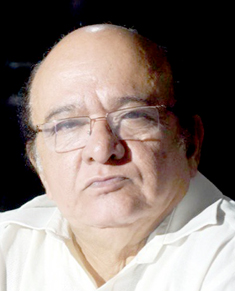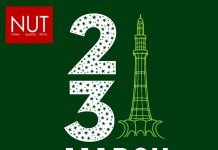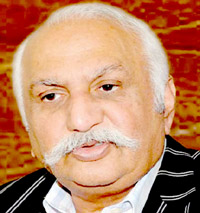After a long period of neglect and successive electoral defeats, Bilawal Bhutto-Zardari has dared to jump back into the political landscape of central Punjab that is dominated by the PML-N and fiercely contested by the PTI.
Is there any social and political space that is still left for him to grab? Is there a traditional PPP constituency among the rural and urban poor still lying dormant that awaits his call to rise from deep slumber? Will he be able to surprise those who read the Bhutto legacy’s obituary in central Punjab long ago?
The route from Lahore to Faisalabad that Bilawal has chosen for public mobilisation consists of districts that are at the top of social and development indicators and the focus of Sharifs’ paradigm of development. Is he going to benefit from the kind of social stratification that comes in the wake of such a socially polarising development model? But who are the potent aspirants on the ground from among the ragtag jiyalas and the exhausted rank and file of the PPP who will connect the third-Bhutto – who is yet to show a charismatic glimpse of Bhutto or Benazir – with the masses?
The timing of the political mobilisation is eclipsed by the media’s entire focus on the Panama case proceedings in and out of the Supreme Court, with Imran Khan fighting perhaps his last-ditch battle against what he describes as the “mother of all evils”.
The PPP still doesn’t have any party structure at the local level, except demobilised remnants on the ground. Then, on what basis has Bilawal jumped into untested waters? Is it populist instinct once again on play? Perhaps, after holding a party convention in Lahore, he wants to mobilise whatever possible public support he can garner at the initial launching of his potential popular appeal. He will be starting his rally from Lahore (bypassing it) amid a cold wave while people are protesting along the route against the worst gas loadshedding in recent times.
Gathering a few thousand activists and ending with a respectable crowd at the centre of Faisalabad could be a consolation prize for the dwindling political fortunes of the PPP in this area, which was once the Bhuttos’ other Larkana.
A great deal has changed since the Pakistan National Alliance’s Nizam-e-Mustafa Movement against Zulfikar Ali Bhutto and the prolonged reverse social engineering under a most rabid reactionary regime of Gen Ziaul Haq. A new class of neo-rich and non-party local councillors had emerged on the political scene under a strong mullah-military-bazaar alliance in primarily a pro and anti-Bhutto political polarisation. It was none other than Nawaz Sharif – of the House of Sharif – who became a victim of Bhutto’s nationalisation of industries and even small businesses and who was built as an aggrieved leader against Bhutto’s quasi-socialism.
The establishment made it possible, by all means, that the PPP never wins back Punjab, which still belonged to Benazir Bhutto till 1988. Yet, the PPP, under a dynamic BB, lost in the Punjab Assembly elections to the Islami Jamhoori Ittehad, formed by General Aslam Baig and General Hamid Gul. Efforts to win it back with defectors like Manzoor Watto did not augur well to sustain the PPP’s popularity in Punjab.
Nawaz Sharif’s rise to power, after the Benazir government’s ouster by an authoritarian patriarch, former president Ghulam Ishaq Khan, with the patronage of the establishment helped bring together a broad coalition of right-wing, conservative bourgeois forces. The Punjabi bourgeoisie had now politically matured so much that it was ready to take its own course while rejecting the dictates of a bureaucratic establishment. Nawaz Sharif had sensed that and decided to become a leader in his own right. His defiant speech against Ghulam Ishaq Khan gave him a similar impetus to what Bhutto gained by attracting public attention towards the Tashkent Declaration against Ayub Khan. This, combined with other factors, provided a pro and anti-Bhutto polarisation its alternative leader in Nawaz Sharif.
The successive electoral defeats of the PPP in Punjab and the consolidation of the PML-N under Nawaz Sharif has now transformed the Punjabi political landscape into pro and anti-Sharif polarisation. The assassination of BB also created a void that helped the PML-N keep Punjab even in the 2008 elections.
An otherwise politically correct regime of former president Asif Ali Zardari – despite remarkable constitutional changes and democratic consolidation – lost touch with the popular genesis of a ‘party of the masses’. Zardari believed that idealism and the populism of the 1960s and 1970s was now a thing of the past and the time was ripe for pragmatic reconciliation and compromises. It did allow the democratic transition to move forward, but badly damaged the PPP’s standing among the masses.
Not quite problematically, Zardari self-conveniently replaced Bhutto as his role model with the Sharif model of sudden rise to political and economic power. By converting BB’s paradigm of reconciliation between civilisations at a global scale, he expounded pragmatism and opportunism as a guiding principle for coalescing with those who were on the other end of the social polarisation. With that came to an end Bhutto’s populism that survived beyond its natural time. If Zardari is averse to the PPP’s revival in its original image, he is right to a point. But he has nothing to offer as an alternative to Sharif and his development paradigm.
The greatest mistake of the PPP was to allow an open field to the PTI in Punjab in the last five or six years. The youth and apolitical sections of the neglected middle classes were fed up with both the parties of the old regime and they found in the masculine cricket-hero and philanthropist Imran Khan an alternative to what they thought about the ‘politics of corrupt by-rotation’.
Built around the abstract moralist and populist themes of insaf (justice) and ehtesab (accountability) and attracting varying sections of society, from tribal elements to the upper middle class of highly-rich housing societies, Imran Khan emerged as a major challenger to the Sharifs’ hegemony in Punjab. It was the neo-right against the traditional right. Given its social limitations, it failed to defeat Sharif in Punjab in the absence of any appeal to the poor masses. Among the poor masses in Punjab lies a dormant political constituency where the PPP once had its roots. It still stands a chance to remobilise it.
Bilawal is wrong in imitating Imran Khan’s moralist tirade against the Sharifs. If he wants to revive the PPP as a centre-left party, he should have a social democratic agenda that appeals to the people at large. In fact, no other party has an agenda, except the PML-N.
What is Bilawal’s alternative development model as opposed to the Sharif model? He should approach the enlightened and well-educated sections of the youth to build a new progressive profile as an alternative to conservative and reactionary middle classes while focusing on the working classes, peasantry and the underprivileged.
There are no surprises awaiting him. He has to make sustained efforts and find his own feet, rather than act as a proxy of those who brought the PPP to its current plight.
The writer is a senior journalist. (Email: imtiaz.safma@gmail.com)
(Courtesy- The News)






